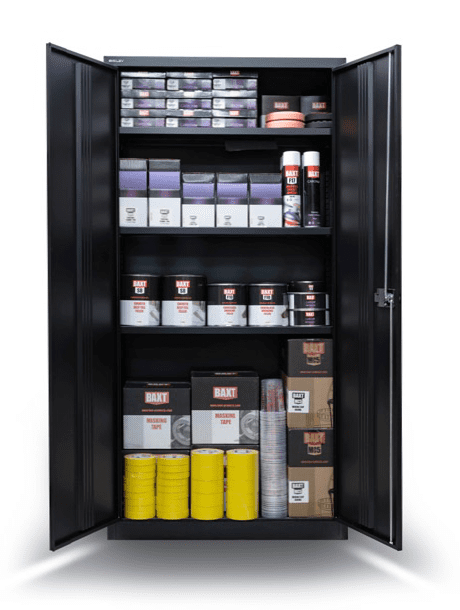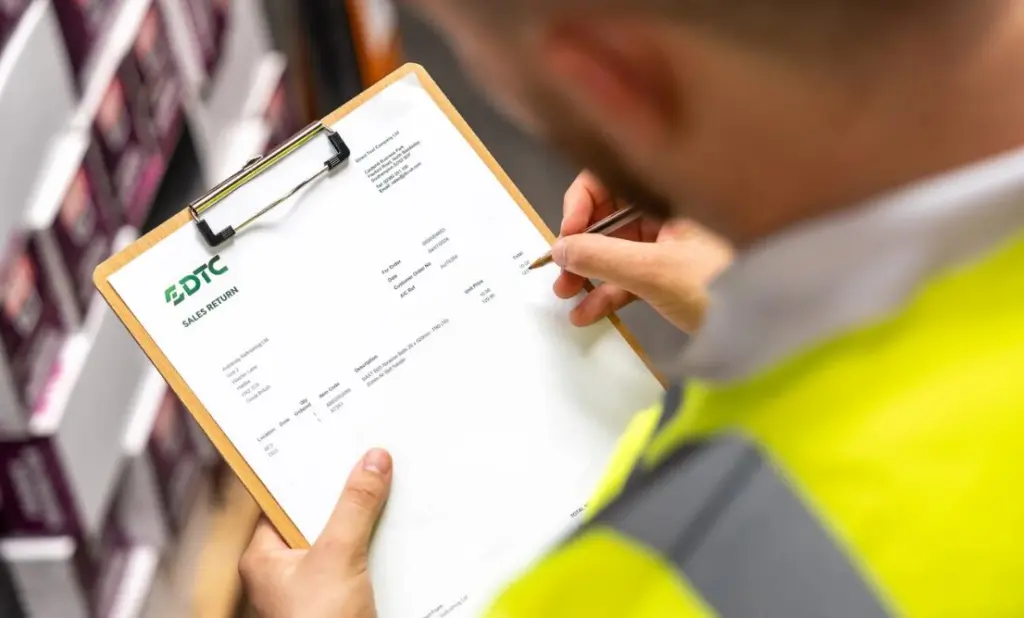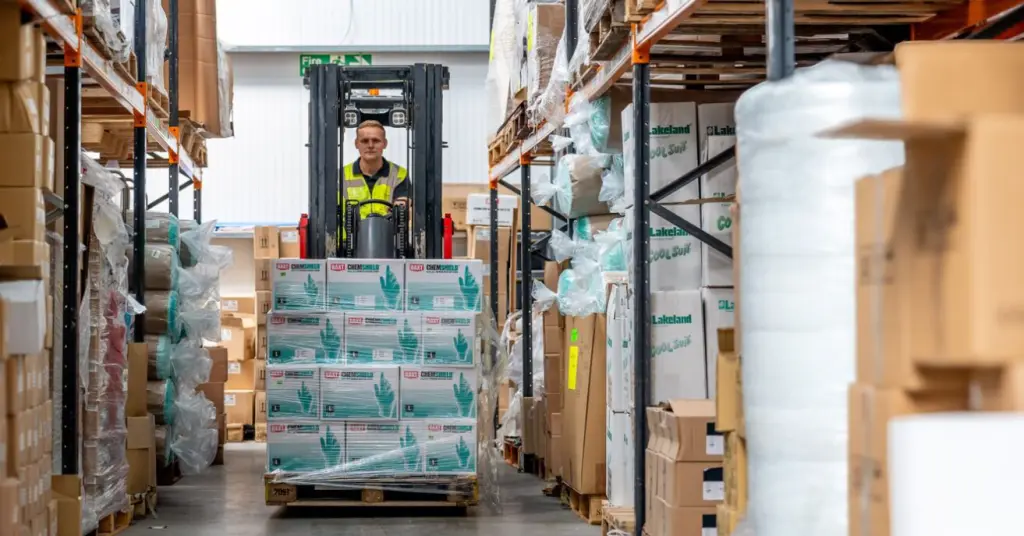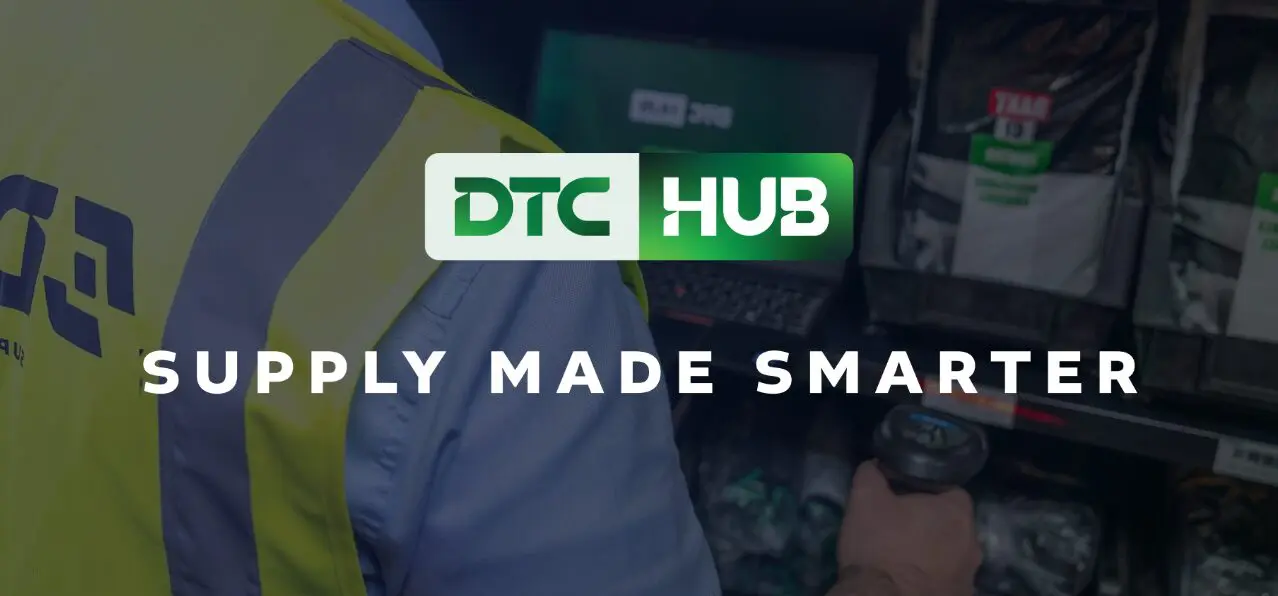

We’re fairly confident that some of you reading this will have encountered a stock control vending machine at one point or another. While they’re not yet widespread, they are steadily becoming a more common feature in workplaces.
In fact, their popularity continues to grow year on year. Word is spreading about how they can help organisations in the finishing industries (and beyond) improve efficiency and reduce costs with surprising ease.
Given the advantages they offer, we believe they’re a stock management tool well worth your consideration. So, in this article, we’ll explore what stock control vending machines are, how they work, and what their strengths and limitations are.
Let’s dive in.
What Are Stock Control Vending Machines?
Put simply, stock control vending machines are just what you’d imagine: large, purpose-built vending units for dispensing consumables.
They function much like the touchscreen vending machines you might find in train stations or airports. An employee selects the item they need, and it’s dispensed in the drawer below, just like the machines you may have bought a can of Coke from back in school.
What Benefits Do Stock Control Vending Machines Offer?
The basic concept is easy to grasp, but how exactly does this improve your business operations? Let’s break it down.
Just-In-Time Stocking
For those unfamiliar with the term, just-in-time (JIT) stocking refers to maintaining minimal inventory on-site, with stock replenished as soon as it’s used. When appropriately executed, JIT can significantly optimise warehouse space.
However, implementing such a system manually requires considerable effort to monitor stock levels accurately. This is where vending machines shine. They are usually connected to automated systems that track usage and reorder in real time. As a result, you get a hands-off JIT setup, ensuring stock is always available when needed.
Improved Worker Efficiency
One of the most significant advantages of vending machines is their size. They are compact enough to be installed directly on or near the shop floor.
Rather than walking across the building to fetch items from the warehouse, workers can retrieve what they need within seconds. This convenience adds up, particularly in extensive facilities, delivering noticeable improvements in productivity.
In addition, the process of logging stock usage is fully automated. No more time is spent manually recording what’s been taken. Tap a screen, collect the item, and return to work.

Lower Administration Costs
Because every item dispensed is tracked automatically, the reordering process becomes seamless. Staff no longer need to carry out manual stock checks.
This is particularly beneficial in JIT environments where regular stock audits are essential. Even in more traditional systems, it’s one less task for your team to manage.
Full Accountability and Compliance
Workplace theft, often referred to as stock shrinkage, remains a concern in many industries. Fortunately, stock control vending machines provide a simple and effective deterrent.
Most machines require some form of user identification before dispensing stock. This might be a PIN code, key card, or fingerprint. This means you can see exactly who accessed what and when.
In practice, just the presence of a monitored system is usually enough to eliminate the issue. The knowledge that usage is being tracked discourages misuse and makes employees think twice before helping themselves to company stock.

Reduced Consumable Waste
Even your most reliable workers may sometimes overuse consumables. With vending machines in place, usage habits often become more measured.
This is partly due to the visibility of tracking systems, but also thanks to usage reports that can highlight trends. If needed, you can take steps to reduce overuse by identifying areas where stock is being used more than necessary.
Either way, more careful usage leads to lower stock costs and better profit margins.
Guaranteed Stock Availability
Because vending machines are integrated with real-time monitoring and automatic reordering, the risk of running out of key items is virtually eliminated. Delays caused by forgotten reorders quickly become a thing of the past.

Surprisingly Simple to Use
At this point, you might be wondering how complex or costly these systems are to implement.
In reality, most vending machine providers handle the technical side for you. All the machines usually need is a plug socket and a Wi-Fi connection. The tracking and analytics are managed remotely, and you’ll usually receive access to an online dashboard where you can view live stock levels and usage reports.
There’s no need for complicated integrations with your existing systems. Installation is quick and straightforward. Once each worker has a swipe card or PIN, you’re ready to go.
Cost-Effective Solutions
Perhaps most appealing is that these benefits often come at a lower cost than you might expect. In many cases, the vending machine itself is provided free of charge.
This usually applies when sourcing your consumables from the same supplier that provides the machine. They benefit by having a permanent distribution point in your workplace, and you benefit from the control, efficiency, and cost savings the technology delivers.
Conclusion
And there you have it — a quick introduction to stock control vending machines.
They represent a clever and effective use of familiar technology, offering businesses in the finishing industries a smart way to reduce costs and boost efficiency.
While they might not be the right fit for every organisation, the range of potential benefits means they’re certainly worth considering.
Best Tool to Help: The DTC HUB

DTC HUB is a digital partner for more innovative stock management and ordering. From real‑time inventory tracking to fast, accurate ordering, our platform ensures that your supply is made simple.
It isn’t just a tool; it’s an extension of your team. Combining advanced digital features with expert support helps you optimise every step of your supply chain.


